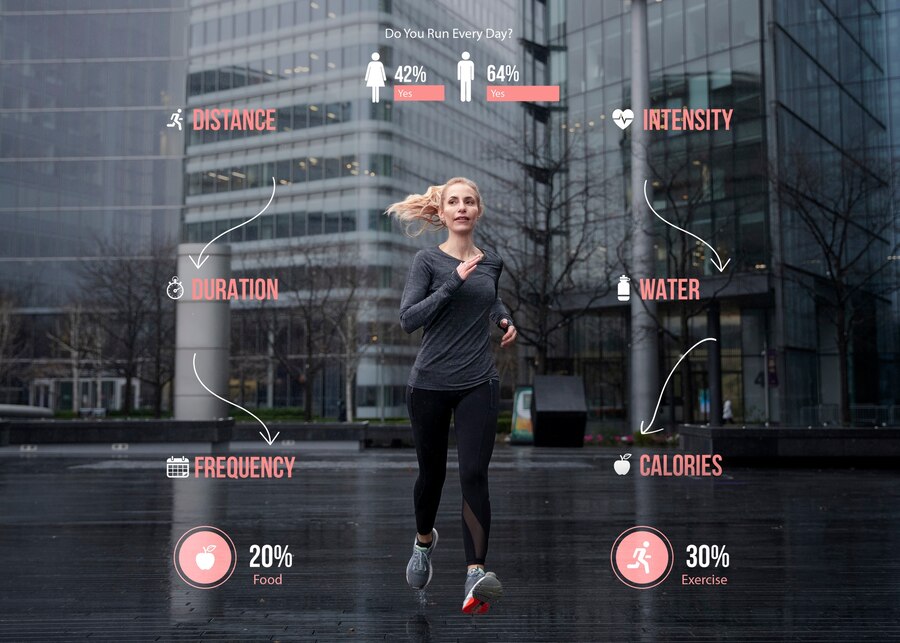In the ever-evolving world of fitness, staying updated with the latest trends is crucial for maximizing your workout routine’s effectiveness and enjoyment. As we strive to lead healthier lifestyles, new workout trends emerge, promising exciting challenges and transformative results. From high-intensity interval training (HIIT) to unconventional fitness classes, the options are diverse and cater to a wide range of preferences and fitness goals. In this blog, we delve into some of the latest fitness trends, exploring their benefits and why you should consider incorporating them into your regimen.
-
High-Intensity Interval Training (HIIT)
HIIT has been a dominant force in the fitness world for some time now, and its popularity continues to soar. This workout regimen alternates between short bursts of intense exercise and brief periods of rest or lower-intensity activity. The beauty of HIIT lies in its efficiency; it delivers maximum results in minimal time.
The benefits of HIIT are manifold. Firstly, it boosts cardiovascular health by improving heart rate and oxygen consumption. Secondly, it enhances metabolism, promoting calorie burn even after the workout session has ended—a phenomenon known as the afterburn effect. Additionally, HIIT is adaptable to various fitness levels, making it accessible to beginners and seasoned athletes alike.
-
Functional Training
Functional training focuses on exercises that mimic movements performed in daily life or specific sports. By targeting multiple muscle groups simultaneously, functional training improves coordination, balance, and overall strength. Unlike traditional weightlifting, which isolates individual muscles, functional exercises engage the body in a holistic manner, promoting functional fitness that translates into real-world activities.
One of the key advantages of functional training is injury prevention. By strengthening the muscles used in daily movements, such as lifting groceries or bending to tie shoelaces, functional workouts reduce the risk of strains and sprains. Moreover, they enhance joint stability and flexibility, leading to better overall mobility and range of motion.
-
Mind-Body Practices: Yoga and Pilates
In today’s fast-paced world, stress management is paramount for maintaining overall well-being. Mind-body practices like yoga and Pilates offer a holistic approach to fitness, combining physical exercise with mental relaxation and mindfulness techniques.
Yoga, with its focus on breath control, meditation, and various postures (asanas), promotes flexibility, strength, and stress reduction. Its versatility allows practitioners to choose from a wide array of styles, ranging from gentle restorative yoga to dynamic power yoga.
Similarly, Pilates emphasizes core strength, stability, and body awareness through controlled movements and precise alignment. By targeting the body’s powerhouse—the muscles of the abdomen, lower back, hips, and glutes—Pilates improves posture, muscle tone, and overall functional fitness.
-
Group Fitness Classes: From Dance Workouts to Boot Camps
Group fitness classes offer a sense of community, motivation, and accountability that can be lacking in solo workouts. Whether you’re into dance-based cardio classes like Zumba, high-energy spin sessions, or boot camp-style workouts, there’s a group fitness class to suit every taste and fitness level.
The camaraderie and support of fellow participants can be a powerful motivator, encouraging you to push past your limits and achieve your fitness goals. Moreover, the structured format of group classes ensures a well-rounded workout that targets various muscle groups and energy systems.

-
Technology-Driven Fitness
In the digital age, technology plays an increasingly prominent role in the fitness industry. From wearable fitness trackers to virtual reality workouts, technology offers innovative tools to enhance motivation, track progress, and personalize training programs.
Fitness trackers and smartwatches monitor vital metrics such as heart rate, steps taken, and calories burned, providing valuable feedback to users. Virtual reality (VR) workouts transport participants to immersive environments, making exercise more engaging and enjoyable.
Furthermore, apps and online platforms offer a wealth of resources, including workout plans, instructional videos, and nutrition guidance. Whether you prefer guided workouts from the comfort of your home or real-time performance tracking at the gym, technology empowers individuals to take control of their fitness journey.
In conclusion, the world of fitness is dynamic and ever-changing, with new trends and innovations continually reshaping the landscape. By embracing these trends and exploring new workout modalities, you can challenge yourself, prevent workout boredom, and achieve sustainable results. Whether you’re drawn to the intensity of HIIT, the mindfulness of yoga, or the camaraderie of group fitness classes, there’s something for everyone in the diverse and exciting world of fitness trends. So, lace up your sneakers, try something new, and embark on a journey to a healthier, happier you!












